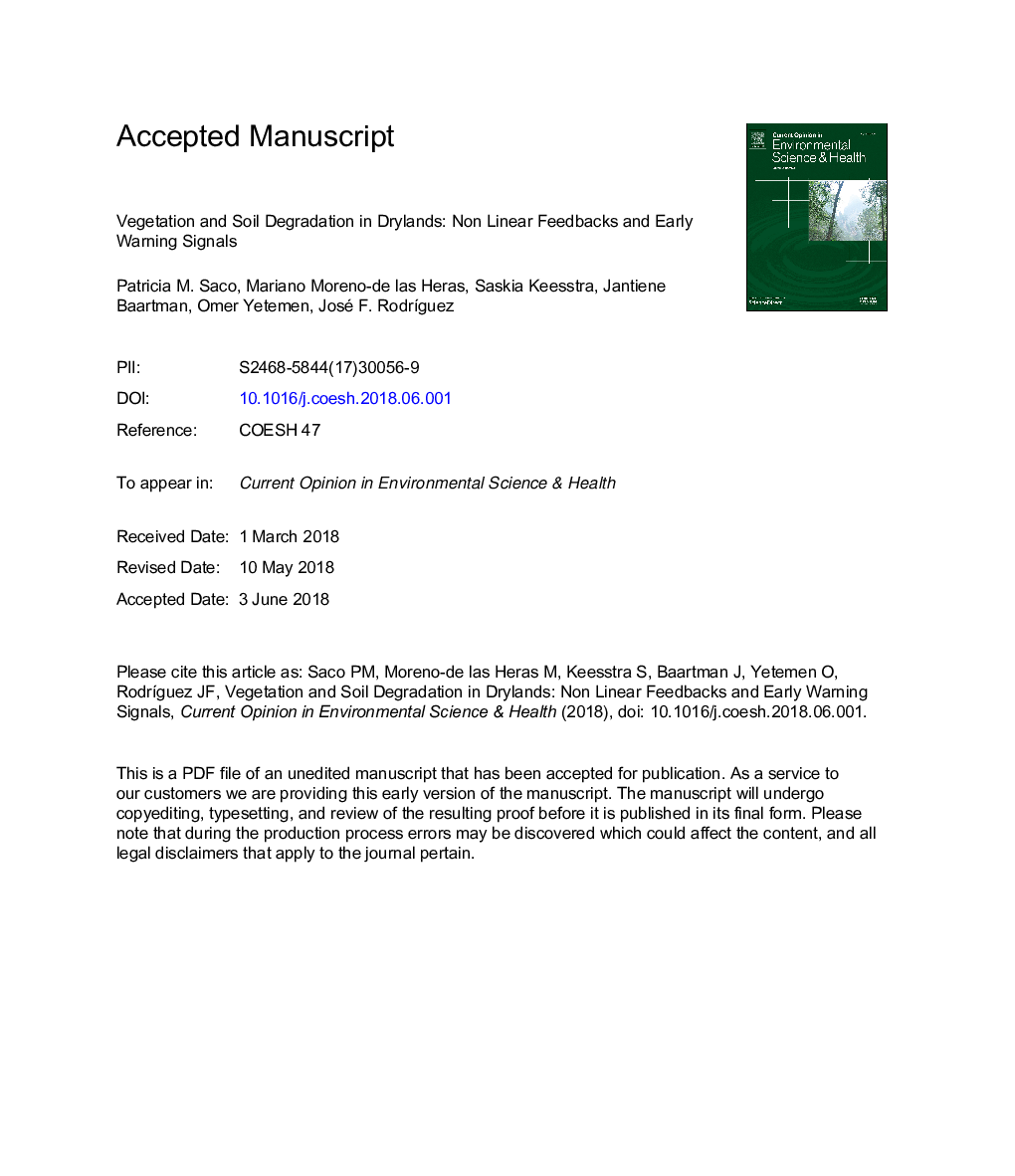| Article ID | Journal | Published Year | Pages | File Type |
|---|---|---|---|---|
| 8940578 | Current Opinion in Environmental Science & Health | 2018 | 15 Pages |
Abstract
Anthropogenic activities and climate change are imposing an unprecedented pressure on drylands, increasing their vulnerability to desertification. The spatial organization of the sparse vegetation cover is fundamental for the healthy function of the system, and disturbances can trigger cascading feedbacks leading to catastrophic system collapse. Here we discuss some of the latest research aiming at understanding abrupt landscape transitions and possible non-reversible changes, as well as emerging research on the identification of early warning indicators of abrupt transitions to desert states. Robust indicators should take into account temporal system dynamics characteristics, vegetation organization/patch size distribution, functional connectivity measures and human intervention effects.
Related Topics
Life Sciences
Environmental Science
Environmental Chemistry
Authors
Patricia M. Saco, Mariano Moreno-de las Heras, Saskia Keesstra, Jantiene Baartman, Omer Yetemen, José F. RodrÃguez,
